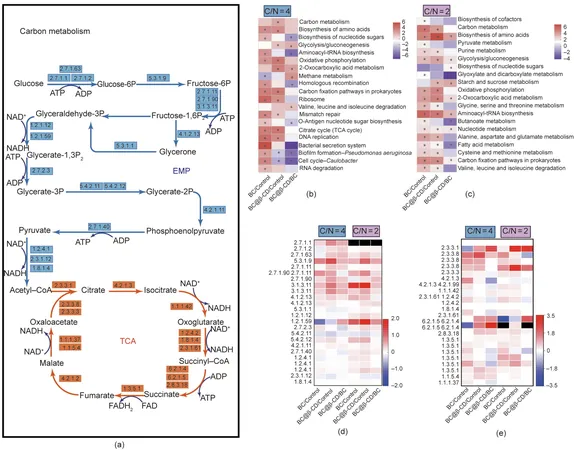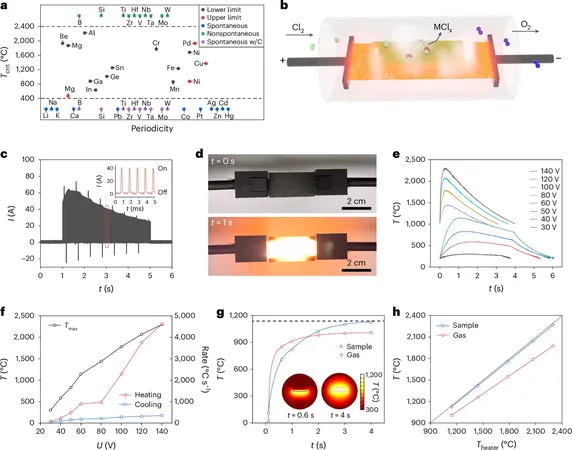
Breakthrough in Wastewater Treatment: New Biochar Substrate Boosts Nitrogen Removal!
2024-09-27
Introduction
A groundbreaking study from the Harbin Institute of Technology reveals a revolutionary advancement in wastewater treatment that could tackle the persistent challenges of nitrogen removal. The research, published in the prestigious journal Engineering, introduces a cutting-edge biochar-based substrate called β-cyclodextrin-functionalized biochar (BC@β-CD) designed specifically for constructed wetlands (CWs). This innovative solution offers a promising answer to the difficulties encountered in low carbon-to-nitrogen (C/N) ratio environments where traditional methods often fall short.
Constructed Wetlands and Nitrogen Removal Challenges
Constructed wetlands have proven to be a viable option for treating effluents from wastewater treatment plants (WWTPs). However, their efficacy is frequently compromised when faced with influent that has a low C/N ratio, leading to insufficient nitrogen removal. The research team, led by experts Xiao-Chi Feng and Nan-Qi Ren, tackled this issue head-on by comparing the performance of three different CW systems: the conventional control, a basic biochar system (BC), and the novel BC@β-CD.
Results of the Study
The exciting results indicated that the BC@β-CD system significantly outperformed the other methods, achieving a staggering 45.89% and 42.48% higher nitrogen removal rates compared to traditional approaches. Moreover, the innovative substrate also proved to be a champion for the environment, reducing potent nitrous oxide (N2O) emissions—responsible for escalating global warming—by an impressive 70.57% to 85.45%.
Mechanisms Behind BC@β-CD's Success
To unravel the mechanisms behind BC@β-CD's success, researchers employed advanced analytical techniques, including metagenomics and enzymatic assays. Their findings indicated that the biochar substrate enhances the processes of carbon metabolism and boosts the activity of critical enzymes responsible for denitrification—all while maintaining microbial diversity within the CWs.
Key Highlights
A key highlight of this research is that BC@β-CD facilitates crucial electron generation and transport, necessary for effective denitrification. This is achieved by amplifying the activity of nicotinamide adenine dinucleotide (NADH) dehydrogenase and optimizing the electron transfer system (ETS), essentially transforming how carbon resources are utilized in denitrification, even when natural carbon sources are sparse.
Implications of the Findings
The implications of these findings are remarkable. The strategic reallocation of carbon metabolism towards denitrification means enhanced nitrogen removal capabilities in wastewater treatment, even under low C/N ratios. This innovation not only signifies a leap in nitrogen removal efficiency but also presents a sustainable solution to reduce greenhouse gas emissions—essential in the current fight against climate change.
Future Research Directions
The researchers believe that the deployment of BC@β-CD in constructed wetlands could mark a significant shift in environmental engineering, pushing the boundaries of wastewater treatment technology further toward eco-friendliness and efficiency. Future studies will aim at scaling this technology and adapting it to various wastewater treatment scenarios across the globe.
Conclusion
As the demand for sustainable environmental solutions grows, this pioneering research stands as a beacon of hope, illuminating a path toward cleaner and more effective wastewater management strategies.









 Brasil (PT)
Brasil (PT)
 Canada (EN)
Canada (EN)
 Chile (ES)
Chile (ES)
 España (ES)
España (ES)
 France (FR)
France (FR)
 Hong Kong (EN)
Hong Kong (EN)
 Italia (IT)
Italia (IT)
 日本 (JA)
日本 (JA)
 Magyarország (HU)
Magyarország (HU)
 Norge (NO)
Norge (NO)
 Polska (PL)
Polska (PL)
 Schweiz (DE)
Schweiz (DE)
 Singapore (EN)
Singapore (EN)
 Sverige (SV)
Sverige (SV)
 Suomi (FI)
Suomi (FI)
 Türkiye (TR)
Türkiye (TR)